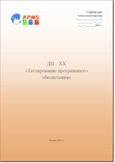ERwin is one of the CASE tools that allow you to model business processes. It belongs to the I-CASE category. ERwin provides integration of top-level models with lower-level models. Top-level models are developed at the initial stages of information systems design. Lower-level models are developed at the stage of program code creation and testing.
ERwin
The first version of ERwin was developed in the late 90s by Logic Works Company. Further, this software product became owned by CA Technologies, which is currently engaged in its support and development. The next version of this product, CA ERwin r9, was released in 2012.
ERwin made it possible to carry out data modeling and process modeling starting from the seventh version (before, process modeling was carried out at the expense of BPwin). ERwin contained the appropriate modules to do this. ERwin data modeler was designed for data modeling. ERwin process modeler was designed for process modeling. These modules were part of the ERwin Modeling Suite product.
The main purpose of ERwin data modeler is data modeling, therefore, its use is limited from the point of view of business process modeling. It allows you to create high-level data models, perform automatic conversion of these models into low-level models, generate database schemas and data descriptions at the level of program code.
The IDEF1X and IE (Information Engineering) standards are used as modeling standards in ERwin data modeler. They based on entity-relationship diagrams. The main types of business process models that can be created by using ERwin data modeler are data flow diagram, distribution model, event/state model.
Data models that are created by using ERwin data modeler are divided into two categories:
- logical models. These models are designed to represent elements in terms of business processes. The entity-relationship diagram, K-B model (key-based model) and FA model (fully defined model) are used for modeling.
- physical models. These models are designed to create an information system database. They provide the translation of business process concepts to the level of IT concepts. Two types of models are used for modeling – a transformational model and a schematic database model (DBMS model).
ERwin process modeler makes it possible to carry out functional modeling. This module supports working with the IDEF0, IDEF3 and DFD modeling standards. You can create function diagrams, work flow diagrams, and data flow diagrams with ERwin process modeler.
Models created by using ERwin process modeler can be divided into the following categories:
- process models. They include models based on IDEF0, IDEF3 and DFD;
- models of the "swimming lanes" type. They allow you to visualize and optimize complex processes;
- organizational models. You can define roles and responsibilities in business processes using these diagrams in ERwin process modeler;
- process stability models. These models include cost analysis (ABC models) and dynamic models. Dynamic models show a discrete change in the states of the process depending on the simulated events.
The seventh version of ERwin has a module for the convenience of modeling and analyzing processes that integrates the ERwin data modeler and ERwin process modeler models.
Support for the process modeling module has been discontinued in subsequent versions of ERwin, therefore, ERwin provides only data modeling starting with the eighth version.
ERwin possibility
This product has quite large modeling capabilities despite the fact that the latest versions of ERwin do not support functional process modeling tools. It allows you to present business process data models in a form that is understandable to both business analysts and information system developers.
The CASE tool CA ERwin r9 has the following features that are important for modeling business processes:
- graphical representation of complex data structures. You can automatically create models by using ERwin graphical tools that provide a visual representation of the entire data structure;
- application of standard elements. ERwin provides a set of standard models (reference models) that can improve work efficiency and eliminate information duplication errors;
- comparison of data models and databases. It is possible to automatically compare and synchronize business process elements (from data models) with database elements due to this tool;
- integration with other modeling tools. ERwin has extensive capabilities for exporting/importing models. It is possible to exchange models with other modeling tools, including those that support UML notation due to the built-in tools.
Erwin Advantages
ERwin advantages can be considered in relation to CASE tools aimed at data modeling.
The CA ERwin r9 has the following advantages:
- user interaction possibility. ERwin provides various opportunities for information exchange between roles within the organization. Business analysts and technical specialists can access data models due to the web portal in understandable representations for them;
- standard representations of elements. Standardized representations of object names, standardized data types and reference models are used in ERwin in order to ensure the unity of the representation of data model elements;
- application of open architecture. ERwin provides extensive integration capabilities with other process modeling and information system development tools (more than 120 different tools);
- visual representation of large data arrays. It is possible to provide a graphical representation of data models of various structures and degrees of nesting due to a powerful graphical system and navigation system;
- users collaboration with the repository. ERwin provides automatic version control, access control, conflict management and model modification for effective collaboration on models.
